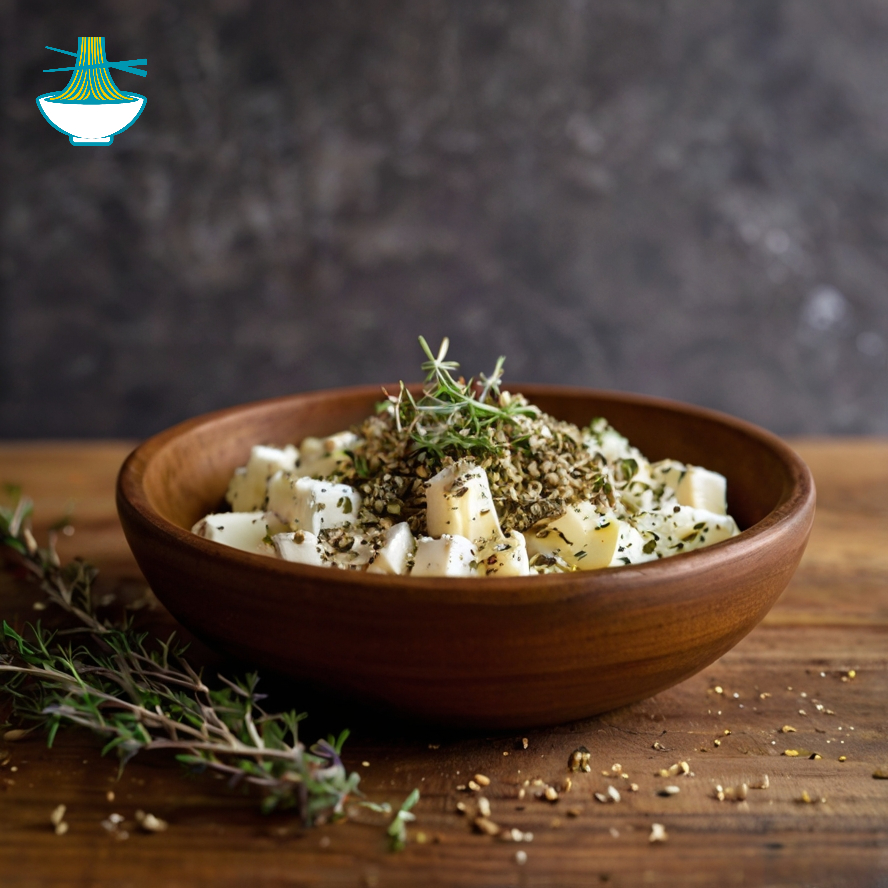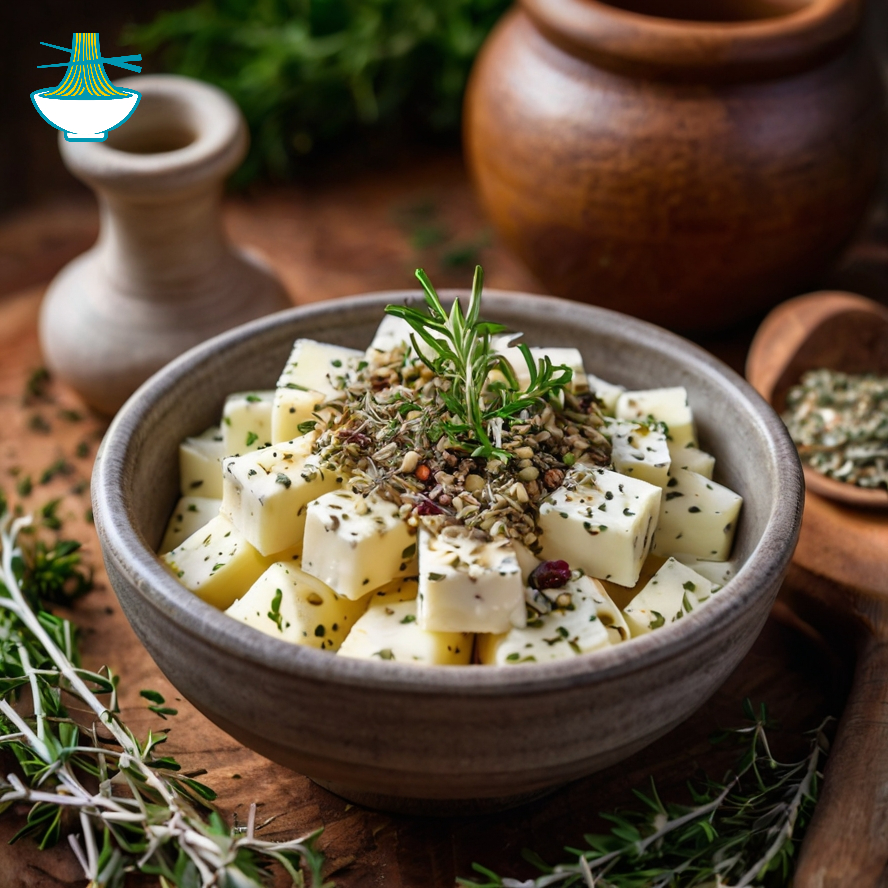Discover how to make Shanklish, a traditional fermented cheese from the Levant. This recipe guides you through the process of creating Shanklish, which is often rolled in aromatic thyme or za'atar, adding a unique flavor to the creamy cheese. Perfectly paired with olive oil and fresh vegetables, Shanklish is a delicious and versatile addition to your culinary repertoire. Learn the step-by-step process to make this savory cheese at home!
Ingredients:
- 1 liter (4 cups) whole milk
- 1/4 cup plain yogurt (with live cultures)
- 1/4 cup non-iodized salt
- 1/4 teaspoon rennet (diluted in 1/4 cup water)
- Thyme or za'atar for coating
- Olive oil for serving
- Fresh vegetables (e.g., tomatoes, cucumbers, bell peppers) for serving
Instructions:
Heat the Milk: Pour the milk into a large pot and heat over medium heat until it reaches 43°C (110°F). Stir occasionally to prevent scorching.
Add Yogurt: Remove the pot from heat and stir in the plain yogurt. Mix well.
Add Rennet: Slowly add the diluted rennet to the milk, stirring gently. Cover the pot and let it sit undisturbed for 1-2 hours, or until the milk has set and you can cut it with a knife.
Cut the Curd: Using a knife, cut the curd into small cubes. Let it rest for 5 minutes.
Cook the Curd: Heat the curds gently, stirring occasionally, until they reach 54°C (130°F). Cook for about 10 minutes, then remove from heat.
Drain the Curd: Line a colander with cheesecloth and pour the curds into it. Let them drain for 1-2 hours, or until most of the whey has drained off.
Season and Form: Transfer the curds to a bowl and mix in the salt. Shape the mixture into small balls or disks.
Coat with Thyme or Za'atar: Roll each cheese ball in thyme or za'atar to coat evenly.
Ferment: Place the coated cheese balls on a tray and let them ferment at room temperature for 2-3 days. Check periodically for desired tanginess.
10. Store: Transfer the fermented cheese to an airtight container and refrigerate. Serve drizzled with olive oil and accompanied by fresh vegetables.
Enjoy your homemade Shanklish as a flavorful appetizer or snack!
Nutritional Values
For the Cheese-Making Process:
Whole Milk (1 liter or 4 cups)
- Calories: ~61
- Protein: ~3.3g
- Fat: ~3.3g
- Carbohydrates: ~4.8g
- Calcium: ~120mg
Benefits:
- Excellent source of protein, calcium, and vitamin D.
- Supports bone health and provides essential nutrients.
Plain Yogurt (1/4 cup, with live cultures)
- Calories: ~59
- Protein: ~10g
- Fat: ~3.3g
- Carbohydrates: ~3.6g
- Calcium: ~150mg
Benefits:
- Provides probiotics that aid in digestion.
- Adds tanginess and helps in setting the cheese.
Non-Iodized Salt (1/4 cup)
- Calories: ~0
- Protein: ~0g
- Fat: ~0g
- Carbohydrates: ~0g
Benefits:
- Essential for flavor and preservation.
- Use in moderation to manage sodium intake.
Rennet (1/4 teaspoon, diluted in 1/4 cup water)
Nutritional Values (per 100ml of rennet solution):
- Varies based on brand; typically minimal calories and nutrients.
Benefits:
- Enzyme used to coagulate milk, essential for cheese-making.
Thyme or Za'atar (for coating)
- Calories: 101
- Protein: ~5g
- Fat: ~1.7g
- Carbohydrates: ~24g
Benefits:Adds flavor and has antioxidant properties.
Nutritional Values (Za'atar, per 100g):
- Calories: ~300
- Protein: ~10g
- Fat: ~10g
- Carbohydrates: ~50g
Benefits:
- Adds a savory, herbal flavor.
- Contains herbs and spices with potential health benefits.
Olive Oil (for serving)
- Calories: ~884
- Protein: ~0g
- Fat: ~100g
- Carbohydrates: ~0g
Benefits:
- Rich in heart-healthy monounsaturated fats and antioxidants.
- Enhances flavor and adds a smooth finish.
Fresh Vegetables (e.g., tomatoes, cucumbers, bell peppers) (for serving)
- Calories: ~20-30
- Protein: ~1g
- Fat: ~0g
- Carbohydrates: ~4-7g
- Fiber: ~1-2g
Benefits:
- Provides vitamins, minerals, and fiber.
- Adds freshness and nutrients to the dish.
This combination of ingredients will help you create a delicious homemade cheese, complemented by fresh vegetables and a touch of olive oil and herbs for added flavor. Enjoy your cheese-making!


Comments